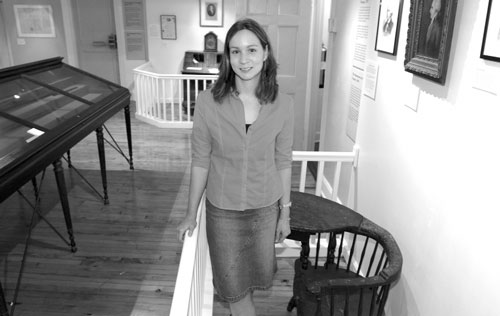By Kaitlen Jay Exum
“Forging a New Nation”
Fraunces Tavern Museum
54 Pearl St
General admission: $3.00; $2.00 students and seniors
Children under 6 free
Exhibit runs until December 31, 2003.
“Forging a New Nation,” the exhibit at the Fraunces Tavern Museum on Pearl Street, details the story of the Tavern in the late 18th century when it was the headquarters for the department of Foreign Affairs, Treasury and War.
“It demonstrates what life was like for the individuals who were running the young republic,” said Jennifer Eaton, Manager of Educational and Public Affairs.
It also illustrates New York’s role as the nation’s political center. Because of its strategic location and good economic standing, the city was crucial to the success of the young nation, which the exhibit illustrates, said Eaton.
In 1785, after being sold by Samuel Fraunces, the tavern underwent a drastic transformation from a pub to an office building that contained the Departments of Foreign Affairs, Treasury and War. Although the tavern had long been a hub for social, political and business affairs, it became an official center of the new Republic. Each department of the young government had obstacles to overcome.
The Treasury Department had to wrestle with war debts and the lack of a uniform American currency, while the War Department needed to furnish the new country with its own arms rather than borrowed weapons. Meanwhile, John Jay, as Secretary of Foreign Affairs, negotiated treaties with Morocco and Spain and dispatched the first foreign representatives from America.
The tavern is best known as the place where General George Washington bid farewell to his troops on December 4, 1783.
But it had an important role for years afterward.
“It’s always a bit of a surprise for people to learn that the building was so important,” says Eaton.
The exhibit is small and easily navigated in less than an hour. Each of the three government departments is represented by an assortment of antiques such as portraits, furniture, rifles and coins. The informational plaques that accompany each item are thorough, but not tedious. Of particular interest is a vignette of what an office in the Department of Foreign Affairs might have looked like, complete with antique desk, chair and clock. Also noteworthy is a Windsor chair where the Marquis de Lafayette once sat.
Another interesting detail is that, while states were encouraged to mint their own coins (rather than use foreign currency), only three states took advantage of this proposal: Massachusetts, New Jersey and Vermont. On display is an example of one of these coins, which bears the words Nova Caesarea—New Jersey in Latin. Similarly, Eaton herself spouts some unusual trivia not presented in the exhibit. For instance, the Secretary of War, Henry Knox died by choking on a chicken bone.
In addition to presenting facts about the government in the late eighteenth century, the exhibit also juxtaposes this information with facts about the government today. For example, while the Treasury Department has retained its name, both of the other departments’ titles have changed: the Department of Foreign Affairs became the State Department and the Department of War evolved into the Department of Defense.
Today the Department of Defense occupies the massive Pentagon. And Foreign Affairs, which in the 18th century had a budget of $1000, the State Department now has a budget of $7.7 billion.
With its understated displays and abundance of text, this is not an ideal exhibit for small children, but anyone from middle school on up should find it interesting and enjoyable.


















